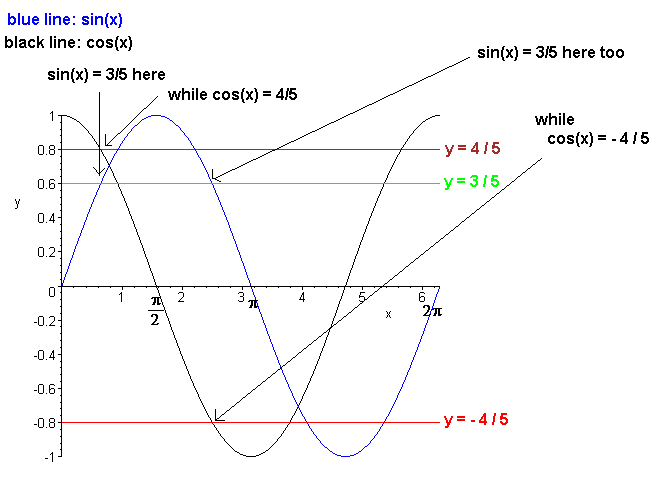if sinx + cosx = 1/5 and o<_x<x, then tanx is ?
what i have done is:
cosx = 1/5 -sinx
(cosx)^2 = (1/5 - sinx)^2 = 1 - (sinx)^2
(1/5 - sinx)^2 = 1 - (sinx)^2
25(sinx)^2 - 5sinx -12 = 0
sinx= 4/5, -3/5 <--rejected
sinx = 4/5
put it back into the equation: (cosx)^2 = (1/5 - sinx)^2 = 1 - (sinx)^2
(cosx)^2 = (1/5 - 4/5)^2 = 1 - (4/5)^2
(cosx)^2 = 1 - (4/5)^2
=1- 16/25
=9/25
=squareroot(9/25)
cosx=3/5
draw the right triangle and tan it.
tanx=4/3
that is the answer i got, however, the answer is -4/3. :?
what i have done is:
cosx = 1/5 -sinx
(cosx)^2 = (1/5 - sinx)^2 = 1 - (sinx)^2
(1/5 - sinx)^2 = 1 - (sinx)^2
25(sinx)^2 - 5sinx -12 = 0
sinx= 4/5, -3/5 <--rejected
sinx = 4/5
put it back into the equation: (cosx)^2 = (1/5 - sinx)^2 = 1 - (sinx)^2
(cosx)^2 = (1/5 - 4/5)^2 = 1 - (4/5)^2
(cosx)^2 = 1 - (4/5)^2
=1- 16/25
=9/25
=squareroot(9/25)
cosx=3/5
draw the right triangle and tan it.
tanx=4/3
that is the answer i got, however, the answer is -4/3. :?

